The focus of this month’s nature ramble was the diverse plant life associated with the mouth of Painkalac Creek.
We marvelled at the coastal saltmarsh plant species, identified several longstanding weed infestations and re-familiarised ourselves with many of our general coastal plants.

A close examination of the identification features of Sea Rush Juncus kraussii growing alongside Painkalac Creek.
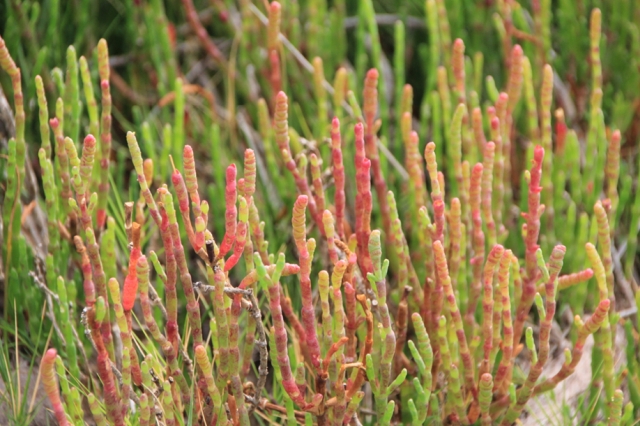 Beaded Glasswort Salicornia quinqueflora subsp. quinqueflora
Beaded Glasswort Salicornia quinqueflora subsp. quinqueflora
Beaded Glasswort, a saltmarsh species which forms extensive carpets in the moist saline soil of the estuary. The leafless succulent plants are comprised of segmented cylindrical branches. The seeds of the Beaded Glasswort are a food source for the endangered Orange-bellied Parrot.
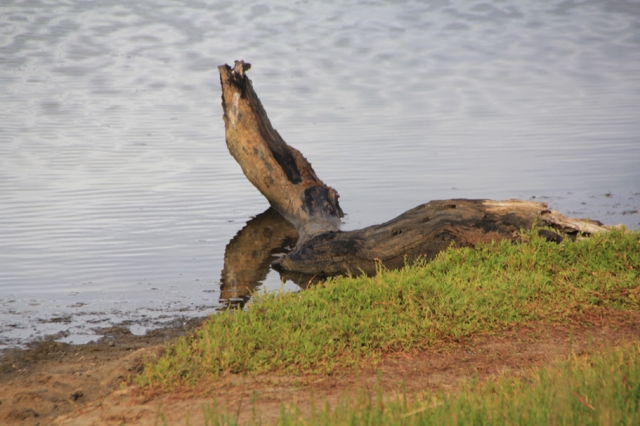 Trailing Hemichroa Hemichroa pentandra
Trailing Hemichroa Hemichroa pentandra
This prostrate succulent is another coastal saltmarsh species which forms extensive carpets of vegetation. Flowering over summer these white to pink flowers are generally missed due to their small size, it is well worth getting up close to these beautiful flowers, even if you have to get your knees wet.
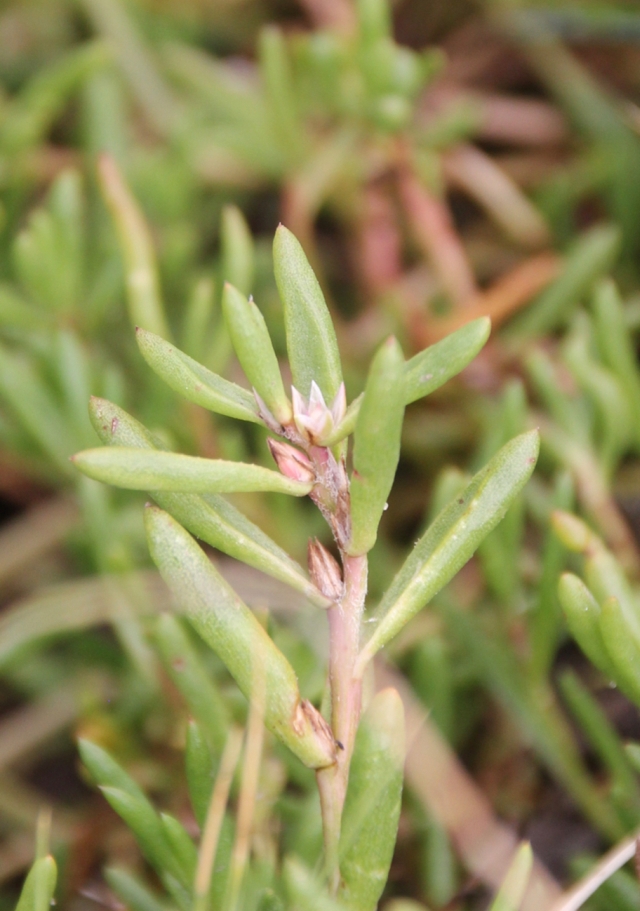 Close up of Trailing Hemichroa
Close up of Trailing Hemichroa
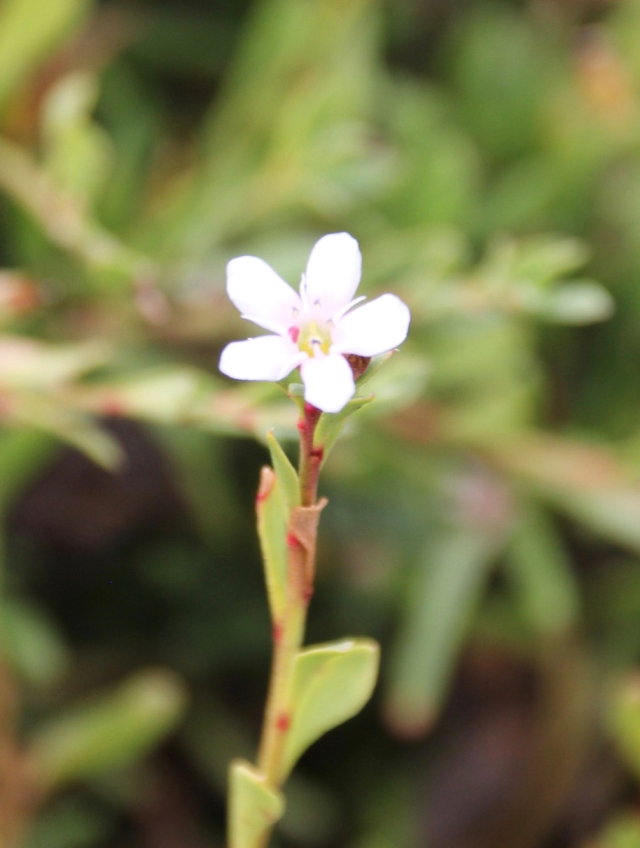 Creeping Brookweed Samolus repens var. repens
Creeping Brookweed Samolus repens var. repens
Look for this widespread trailing coastal saltmarsh plant when you next visit the estuary. Another summer flowering plant, the white to pink flowers are very easily seen.
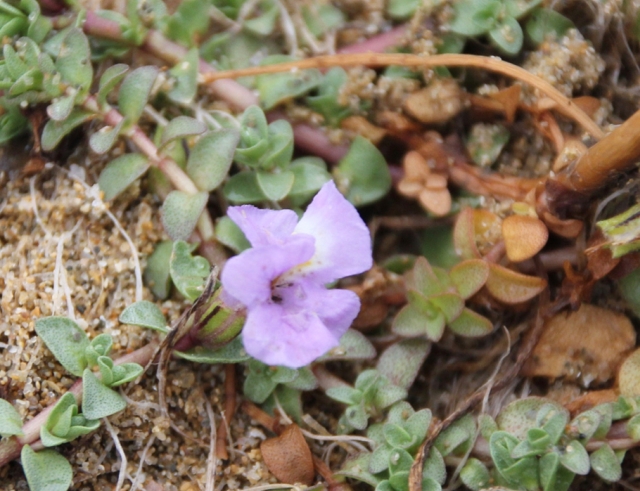 Creeping Monkey-flower Thyridia repens
Creeping Monkey-flower Thyridia repens
Small pockets of this delightful prostrate succulent herb can be found growing amongst the previously mentioned coastal saltmarsh plants. The flowers of Creeping Monkey-flower make this species readily identifiable.
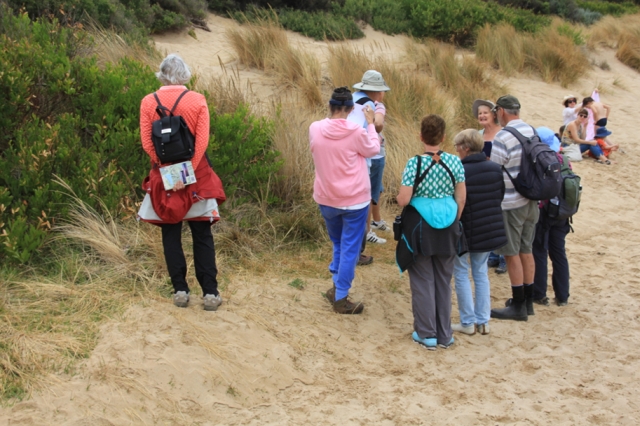 Marram Grass Ammophila arenaria
Marram Grass Ammophila arenaria
This northern hemisphere grass now naturalised in Vic. NSW. Tas. SA. & WA. was introduced into Australia in the 1880’s. Overclearing of coastal vegetation by early Europeans had resulted in severe erosion of coastal dunes, a solution was sought, and Marram Grass was introduced as a dune stabiliser. Interestingly Ferdinand Von Mueller, Victoria’s first Government Botanist made the recommendation. The practice of planting Marram Grass for dune stabilisation continued into the 1980’s. Marram Grass is now considered an environmental weed due to the steep dunes it creates which can effect survival of fauna and flora species, e.g. Little Penguin. Marram Grass is also a strong growing plant which out compete native grasses and sedges.
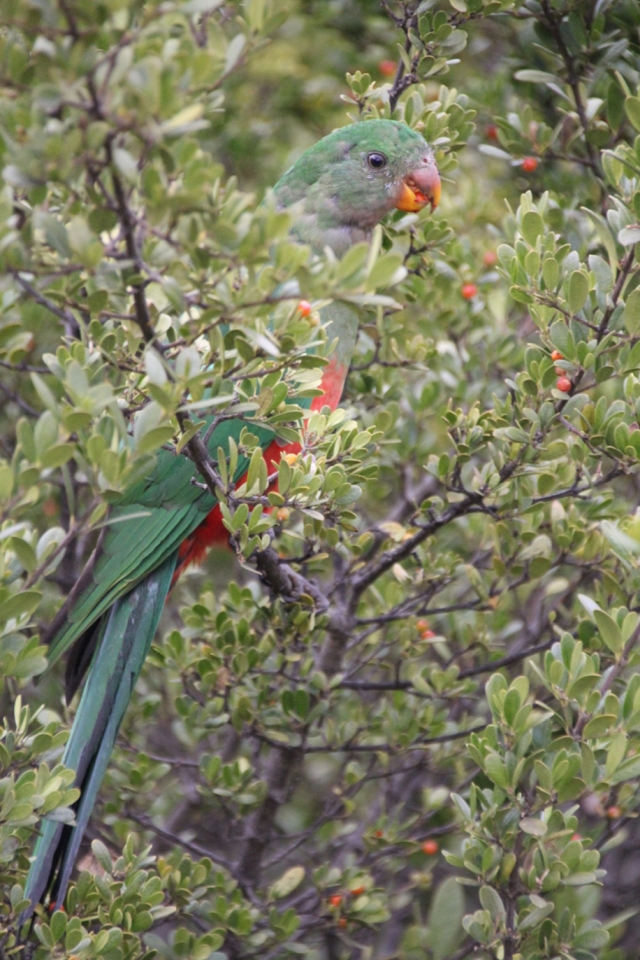 Sea Box Alyxia buxifolia a source of food for King Parrots
Sea Box Alyxia buxifolia a source of food for King Parrots
Leaving the estuary, we continued along the track leading to the lighthouse, this King Parrot was certainly more interested in a feed than our group of nature enthusiasts.
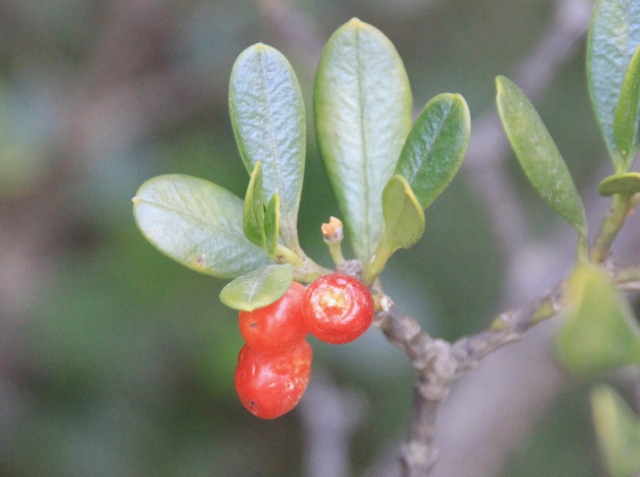 Sea Box berries
Sea Box berries
 Seaberry Saltbush flowers and berries
Seaberry Saltbush flowers and berries
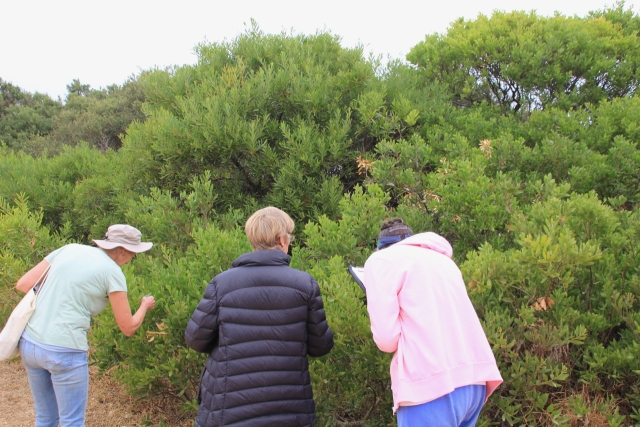 Sallow Wattle vs Coast Wattle discussion
Sallow Wattle vs Coast Wattle discussion
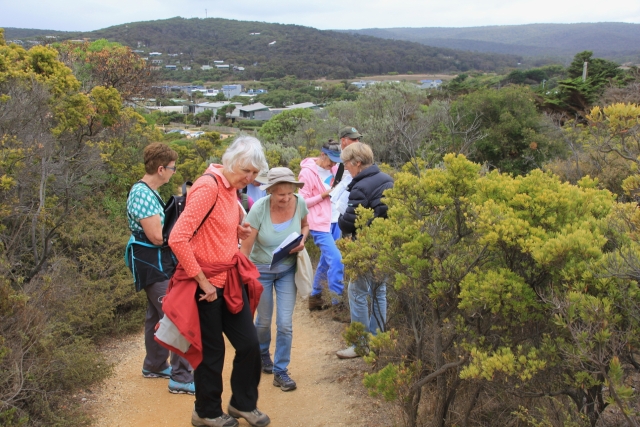 Group view over Aireys
Group view over Aireys
 A rewarding view
A rewarding view
Gail Slykhuis
Images John Rickard